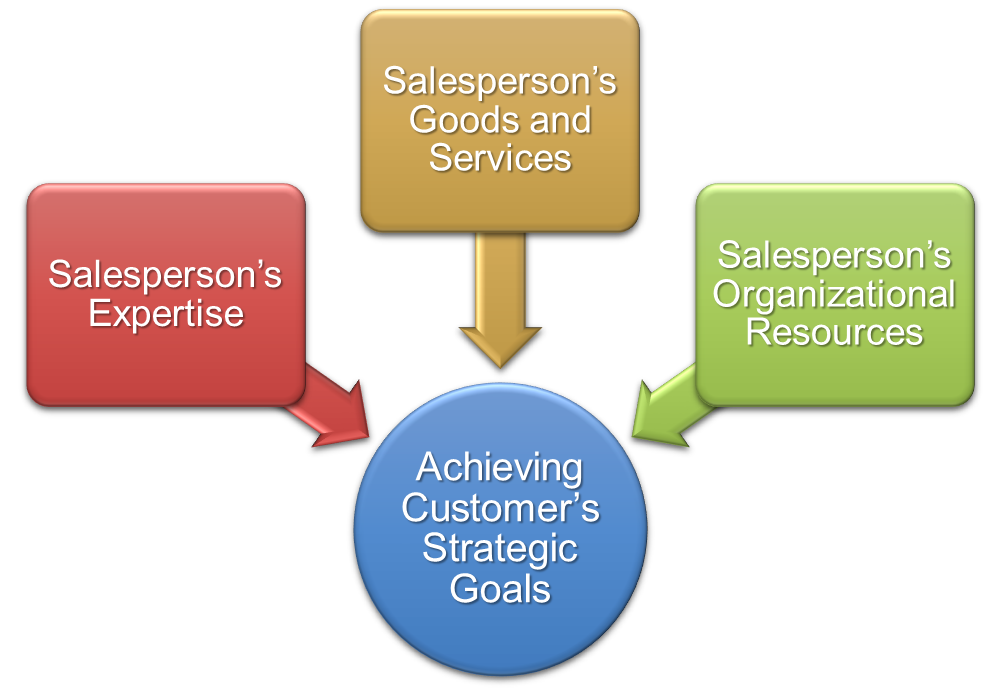Main Content
Lesson 2: Overview of Personal Selling
Adaptive Selling
Ingram et al. (2015a) explain adaptive selling as follows:
Adaptive selling takes place when salespeople modify their sales messages and behaviors during sales presentations and sales dialogues, or when they encounter unique sales situations and customers. Adaptive selling might draw from one or more of the basic approaches to personal selling, or the adaptive salesperson might develop a unique selling approach in a given sales situation. (Chapter 2, pp. 7–8)
They further explore whether a salesperson can practice consultative selling without practicing adaptive selling. Their position is that "given the nature of consultative selling, which typically involves unique sales situations, a salesperson would need to be adept at adaptive selling to successfully practice consultative selling" (Chapter 2, p. 8).
Adaptive selling can be conceptualized and exemplified by examining the five alternative approaches to selling. By understanding the customer through engagement and interaction, the salesperson can adapt by choosing which of the approaches to employ. Often, a hybrid may be necessary or the approach may evolve, as does the selling relationship.
Consultative Selling and Problem-Solving Selling
Ingram et al. (2015a) point out how consultative selling is complimented by problem-solving selling:
Consultative selling is a more comprehensive approach to selling involving the use of products, services and expertise of the sales organization to help customers reach their strategic goals. In consultative selling, the salesperson must be an expert on the customer’s business, competitors, and market developments and use this expertise to provide important advice to customers. (Chapter 2, p. 8)
To help customers reach their strategic goals salespersons can use a problem-solving approach to better understand needs so they may provide comprehensive customer solutions. So a problem-solving approach could be a first step toward a consultative selling relationship.

Stimulus Response Selling

Ingram et al. (2015a) express their ideas about when stimulus response selling would be most effective:
Using the stimulus response approach, salespeople furnish the stimuli (words and actions) to produce the desired response (a customer purchase). Stimulus response selling is the dominant approach used by telemarketing salespeople, who work from a script or use a memorized canned sales presentation. This approach appears most suitable for relatively unimportant purchase decisions, when time is severely constrained and when professional buyers are not the prospects. Stimulus response methods are also more effective when the sales proposition is narrowly defined, for example, selling a single product rather than introducing an entire product line. (Chapter 2, p. 8)
Collaboration and Consultative Selling

Ingram et al. (2015a) discuss the importance of collaboration with the customer and within the sales organization in consultative selling:
Collaboration with the customer and within the sales organization is particularly important in consultative selling, whereby selling is viewed as a consultative, educational process. Members of the sales team must work with the customer to help solve their problems and satisfy their needs. Working as a team, the strategic goals of the buyer can be met. In consultative selling, the salesperson arranges the use of the sales organization’s resources in an effort to satisfy the customer. Teamwork and collaboration are necessary since this usually calls for involving other individuals in the sales organization. For example, the salesperson may need expert advice from production or logistics personnel to fully address a customer problem or opportunity. (Chapter 2, p. 8)
Ingram et al. (2015a) describes needs satisfaction selling as the logic that "customers will be motivated to buy to satisfy particular needs. Using this approach, salespeople help customers identify their needs if they are not already aware of them, and then sell customers product and services to meet their needs" (Chapter 2, p. 10).
Ingram et al. (2015a) provide an example using the Best Buy website to demonstrate that many major corporations provide useful information on their Web sites for potential vendors. The following questions are asked in their new merchandise vendors inquiry form on the Best Buy Web site for the vendors:
- What kind of product and service do you offer?
- Briefly explain your product's competitive advantage.
- What special capabilities and sales support programs do you have to partner with Best Buy to market your product?
- Explain any new technologies that enhance your market position.
- What other national retailers do you currently sell to?
- Do you currently sell your product in other countries and if so where?
- In what country(s) is your product manufactured?(Chapter 2, p.9)
A need satisfaction selling approach is likely to be most appropriate for selling to Best Buy . Ingram et al. (2015a) describe it this way:
Based on the list of questions on the Best Buy website, it appears that Best Buy has a set of well defined needs. For instance, Best Buy wants to stock products their customers want that are also in a growing market. They want to know how the seller can help them move the product to assist them in gaining market share, while cutting costs to maximize their sales. Best Buy is looking for technologically advanced products with a track record that can add value to their product selection and positively impact the sale of other Best Buy products. (Chapter 2, p. 10)
Need satisfaction selling focuses on the customer. Salespeople use questions to uncover buyer needs, and the customer typically dominates the sales interaction until needs have been established. At that point, the salesperson moves to a more active selling role, describing how his or her offering can satisfy the buyer’s needs.

References
Ingram, T. N., LaForge, R. W., Avila, R. A., Schwepker, C. H., Jr., & Williams, M. R. (2015a). Instructor manual for Sales management: Analysis and decision making (9th ed.). New York, NY: Routledge.
Ingram, T. N., LaForge, R. W., Avila, R. A., Schwepker, C. H., Jr., & Williams, M. R. (2015b). Sales management: Analysis and decision making (9th ed.). New York, NY: Routledge.
